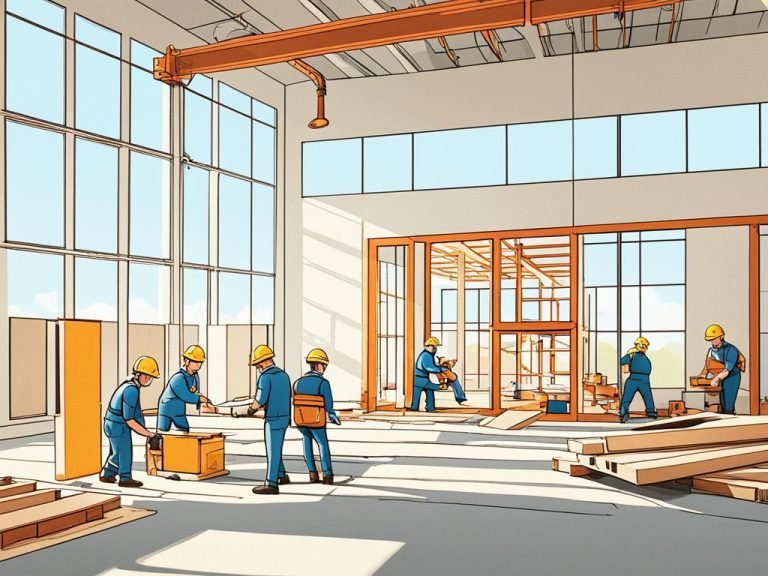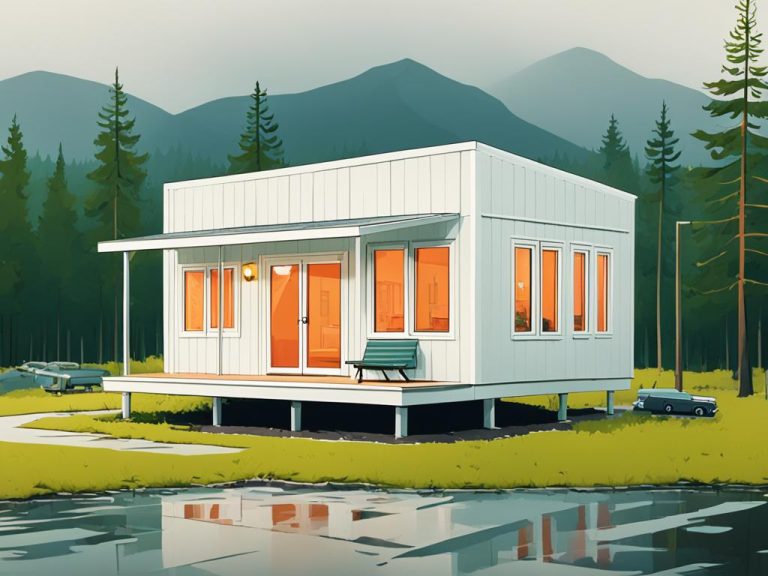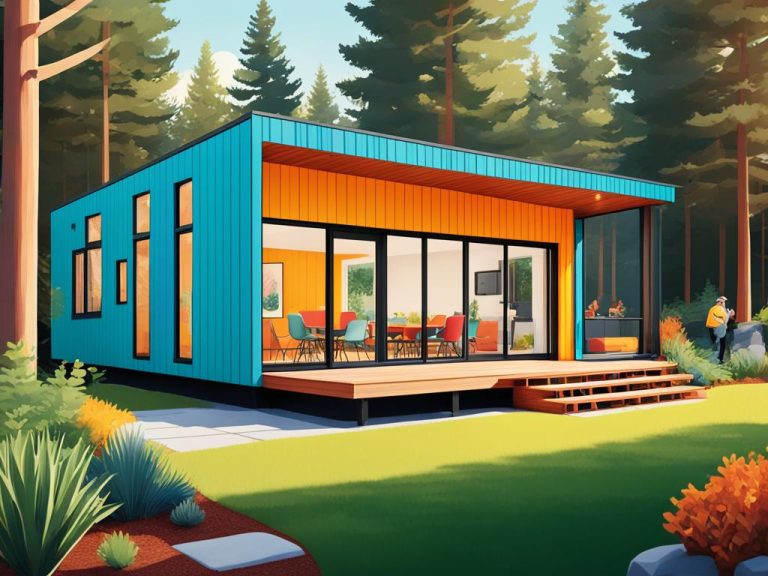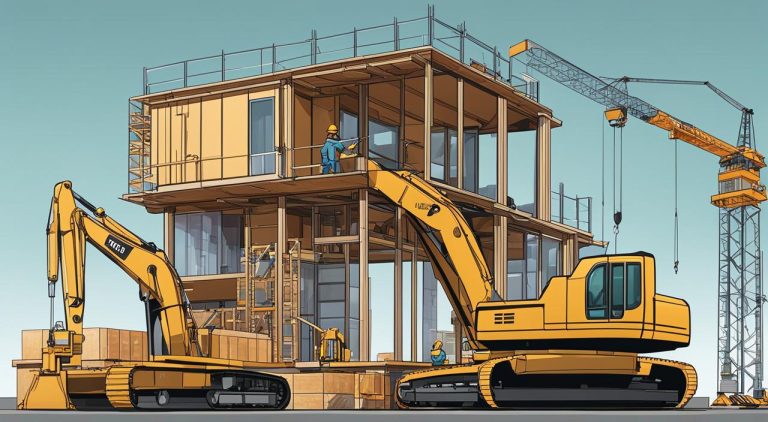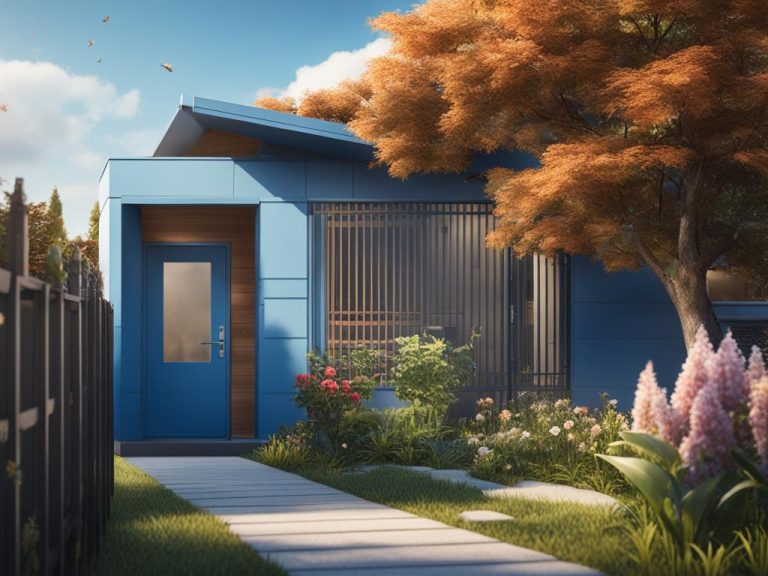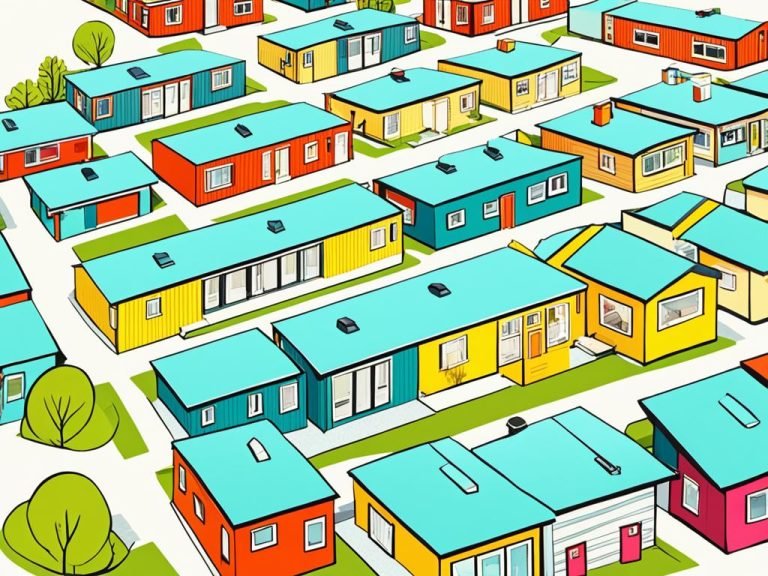Prefab Sustainability Compared to Traditional Building
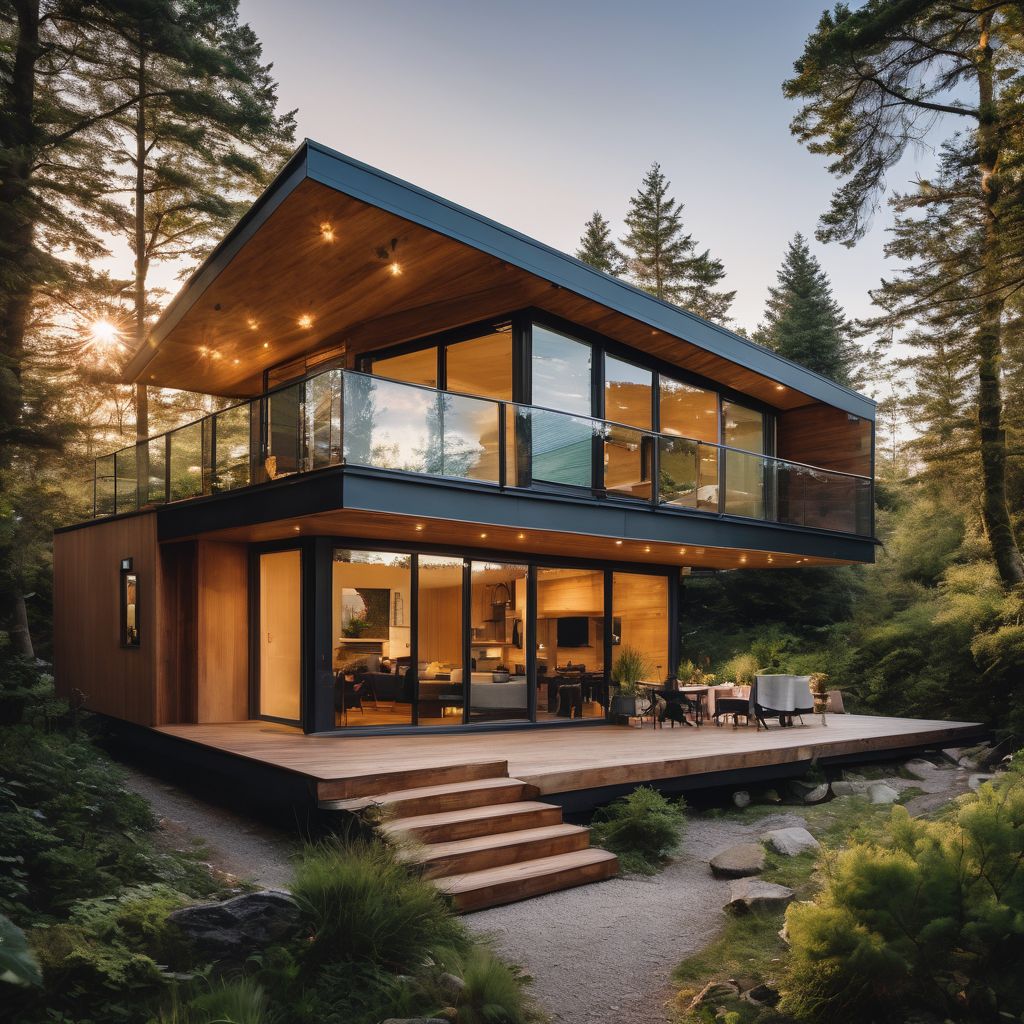
Facing the challenge of sustainable living, we all search for greener choices in our daily lives. Prefabricated construction is stepping up as a rather brilliant solution, cutting down on waste and energy usage quite significantly.
This article will delve into how prefab methods are championing sustainability over traditional building practices, providing you with smarter options for eco-friendly habitats. Stick around – it’s about to get interesting!
Key Takeaways
- Prefab construction cuts down carbon emissions by a lot compared to traditional building. Traditional methods let out 86 kg of carbon for each square meter, but prefab does much better.
- Modular homes are built fast and waste less energy because they’re made in a factory. This can save up to 25% in costs and be around 40% quicker than old ways of building.
- With prefab, there’s way less trash because it uses up to 86.67% less wood waste. Plus, it can cut down concrete waste by about 60%. It also picks materials that are good for our Earth, like recycled stuff.
- Prefab houses keep your home warm or cool without using too much power. They’re built tight so heat doesn’t slip away – this means you help stop climate change and save money on bills.
- When making prefab parts, builders work inside where weather doesn’t bother them. That means no long waits when the weather is bad outside!
Understanding Prefab Construction

Prefab construction, or modular building if you will, pops together homes and buildings much like a child’s block set. Pieces are made in a factory and then carried to the site ready to be put in place.
It’s rather snappy work – think less about waiting for paint to dry and more about snapping your fingers for instant walls.
Now here’s a nifty point: factories making these parts control everything very tightly. From cutting lumber to wiring up sockets, it all happens indoors. This means fewer surprises from weather and better quality bits and bobs that slot together just so.
Plus, workers don’t have their tea breaks rained out; they’re quite chuffed building away come rain or shine inside the factory!
The Role of Prefab Construction in Sustainable Building

In the grand scheme of green building, prefab construction emerges as a bit of a hero; it’s rather like having your cake and eating it too—dishing up sustainability with a side of efficiency.
By sidestepping the traditional rigmarole—and emissions—of on-site builds, it carves out a respectable niche in the eco-friendly construction landscape.
Reducing Carbon Footprint
Prefab construction is like a breath of fresh air for our planet, really. With every square meter of building, traditional methods puff out an extra 86 kg of carbon emissions. That’s quite a bit heavier than your average Labrador, isn’t it? Prefab buildings put on a much lighter show – they dance around these hefty emissions and cut them down impressively.
It’s not just about using less energy; it’s about being smarter with what we use.
Think about wood – not just any old planks, but the kind that grows back. Wood gets used in prefab builds to trap a bit of that cheeky carbon dioxide that’s been warming things up too much.
Less carbon floating around means we’re all better off, especially those polar bears who’ve been having quite the time with their melting ice pads! Modular buildings have this knack for turning green without even trying too hard – sustainable design working hand in hand with Mother Nature rather than giving her the cold shoulder.
Maximising Efficiency
Prefab construction is like a well-oiled machine. It takes bits and bobs and turns them into homes in the blink of an eye. By bringing everything under one roof, err.. factory, this method cuts down on time and mess.
No more waiting for bricks to dry or for paint to set while rain clouds loom overhead. Meanwhile, energy consumption goes on a diet as prefab builders use just what’s needed – nothing more, nothing less.
Cutting corners? Not here. Quality control is the watchword in these factories that churn out modular marvels – each part made with precision that would make even Her Majesty nod in approval.
And since we’re all about streamlining production, think of the next step: comparison with traditional building methods where waste might as well have been invited to tea!
Comparison: Prefab vs Traditional Construction
In the ring of sustainability, we pit prefab against traditional construction—two contenders with very different punches. It’s a duel where efficiency meets heritage, as we scrutinise their methods from foundation to fit-out to determine which builds a greener future.
Process
Prefab construction turns the building game on its head, really. Instead of playing with blocks out in all sorts of weather, these clever modular homes are born in the comfy cradle of a factory.
Imagine that—walls and roofs pieced together under one roof, away from Britain’s famous drizzle.
Traditional building? Bit more hands-on and outdoorsy. Materials trucked to the site, tradespeople braving elements—all very noble but not exactly efficient or kind to our calendars.
Modular construction gives weather a cheeky wink and carries on regardless, cutting down time spent shivering on scaffolds. Let’s just say it makes a good case for working smarter rather than harder.
Foundation
Switching gears from process to the nuts and bolts—literally—the foundation is where prefab takes a different path. Traditional building digs its heels deep into the ground on-site, which can be as unpredictable as a British summer.
With prefab, foundations are laid just so before the pre-built sections strut onto the stage. This careful prep work in a controlled environment means fewer surprises—and nobody fancies an unexpected twist when it comes to solid ground, right?.
On-site construction might have that ‘built from scratch’ charm, but let’s not kid ourselves about its efficiency or environmental impact. Prefab lays down roots with precision and speed, cutting down time spent battling elements or wrangling materials that seem to have a mind of their own.
Plus, who would say no to less mess? Fewer materials wasted means we’re treading lightly on our dear old earth—a win for your wallet and our shared backyard!
Design
Moving from foundations to the creative side of things, design in prefab construction is a bit like playing with building blocks. But these aren’t your average children’s toys; they’re high-tech and can be arranged in countless ways.
Prefab homes offer design flexibility that might surprise you. Architects have a field day with the controlled factory environment, which allows them to craft energy-efficient designs without having to worry about rain spoiling their plans.
This design adaptability extends beyond mere looks too – it’s about making homes greener and more comfortable. With prefab construction, incorporating solar panels or designing for natural lighting isn’t an afterthought; it’s part of the plan from the get-go.
And let’s not forget – since everything is measured and cut precisely offsite, there’s little room for error.. or wasted materials for that matter. It seems prefabs could teach traditional buildings a thing or two about being stylish yet sustainable!
Construction speed
Prefab builds race ahead of traditional ones, don’t they? You can pop up a modular house in less time than it takes some folks to decide on the colour of their kitchen tiles. We’re talking 6-16 weeks for prefab home construction – that’s quick by any standard.
That means families get keys in hand faster and housing shortages don’t linger like unwanted guests.
Our British weather loves a giggle, particularly when it throws a spanner in building works. Yet, prefabs laugh in the face of such tomfoolery. Because most work happens indoors away from rain or cold snaps, there are fewer delays.
And let’s not ignore cost savings–up to 25% off your final bill compared with old-school building methods and around 40% quicker completion rate too. Quick build times mean reduced energy consumption as well; heating and lighting for construction sites clock off earlier than usual—quite the clever two-for-one deal if you ask me.
Weather/Seasonal Risks
Cheeky weather can’t meddle much with prefab construction. Offsite building means most of the work happens away from rain or snow, dodging delays like a pro. It’s not just about staying dry—it’s also about keeping those grey clouds from slowing down progress.
On the flip side, traditional building often finds itself at the mercy of Mother Nature. A bit of drizzle or an unexpected frost could throw a spanner in the works. Modular mates are snickering in their tidy factories while traditional crews might be sipping tea, waiting for skies to clear up!
Sustainability of Prefab and Traditional Building
When it comes to the nitty-gritty of green living, prefab throws a rather flattering hat into the ring of sustainable development—think less waste wandering off to landfills and more smiles from Mother Nature.
Traditional building methods might give us that nostalgic ‘hands-on’ feel, but with eyes on a sustainable future, one can’t help but question if they’re as tuned in to our eco-friendly symphony.
Energy Efficiency
Prefab homes are rather clever when it comes to energy efficiency. They often come with the bells and whistles of green technology – think insulation that’s snug as a bug, and windows that keep heat in like a thermos.
These features help cut down on the need for extra heating or cooling, which means fewer greenhouse gases puffing out into our lovely British skies.
And there’s more good news: these energy-saving tricks continue throughout the life of the building. With tighter construction and less air leakage, prefab buildings make sure your energy isn’t slipping through the cracks — literally.
It’s about keeping cosy without having your boiler going all day long. Reducing energy consumption is not just kind on your wallet but also a pat on the back for Mother Earth – lower carbon emissions from your home mean you’re doing your bit to combat climate change.
Quite right too!
Waste Reduction
Let’s talk rubbish, but the good kind. Waste reduction is a rather snazzy benefit of prefab construction. Picture this: instead of cluttering the site with bits and bobs of unused materials, prefabrication keeps things tidy.
We’re talking up to 86.67% less timber formwork waste—now that’s what you call ‘trimming the fat’. Not only does it slim down wood waste, but concrete rubbish gets a solid haircut too—by around 60%, according to some boffins.
Now, modular methods have their noses in front as they craft buildings in controlled factory settings like a well-oiled machine—less mess more finesse! The facts are stacked; these clever offsite techniques are about as wasteful as a teapot without tea—a rare sight indeed.
With reports showing significant reductions in leftover materials for modular projects, it’s clear we’re onto something special here—a cleaner way to build that gives landfills a break and lets us all breathe easier without those pesky piles of debris everywhere.
Material Sourcing
Prefab construction has a knack for being quite choosy with its materials. It’s all about resource efficiency and doing more with less. Offsite construction takes this to heart by using sustainable building materials that often come from the recycling bin, like recycles content and reused goodies from other sites.
Rather nifty, don’t you think?.
Out there in the traditional building world, things can get a bit messy with new stuff always being dug up or chopped down. Prefab opts for the clever route — it likes to keep things clean and green by sourcing what’s already available and lowering the embodied energy of buildings.
Less waste making its way to landfills is an added bonus!
Conclusion
In the end, it’s clear – prefab is a champ in the sustainability ring. It fights waste with both hands tied behind its back. Traditional builds can’t quite match that yet. With prefab, we’re crafting our future sensibly, and frankly, that’s brilliant for our planet.
Let’s carry on pushing the green boundaries; after all, it’s about building smarter, not harder.
FAQs
1. What makes prefab buildings greener than traditional ones?
Prefab buildings reduce waste because they are made off-site in a factory. This means less construction debris and fewer materials that aren’t used again.
2. Can prefab homes save energy?
Yes, indeed! Prefab homes often include energy-efficient appliances, which can lead to big savings in energy use.
3. How do prefab buildings support clean and sustainable energy?
Some prefab structures come with systems like renewable energy sources — think solar panels or geothermal heat pumps — already built-in!
4. Are there any standards for eco-friendly prefab construction?
Yes – groups like BREEAM and the Leadership in Energy and Environmental Design set rules for making sure these buildings care for our planet.
5. Why is it important to pick green building methods now?
Choosing ways that don’t harm the Earth helps fight against climate change, keeping our air cleaner and helping us live healthier lives.
6. Do prefabs help cut down on pollution overall?
Absolutely! Since most of the building happens in one place, there’s less mess like dust or harmful gases getting into ecosystems from multiple sites.

